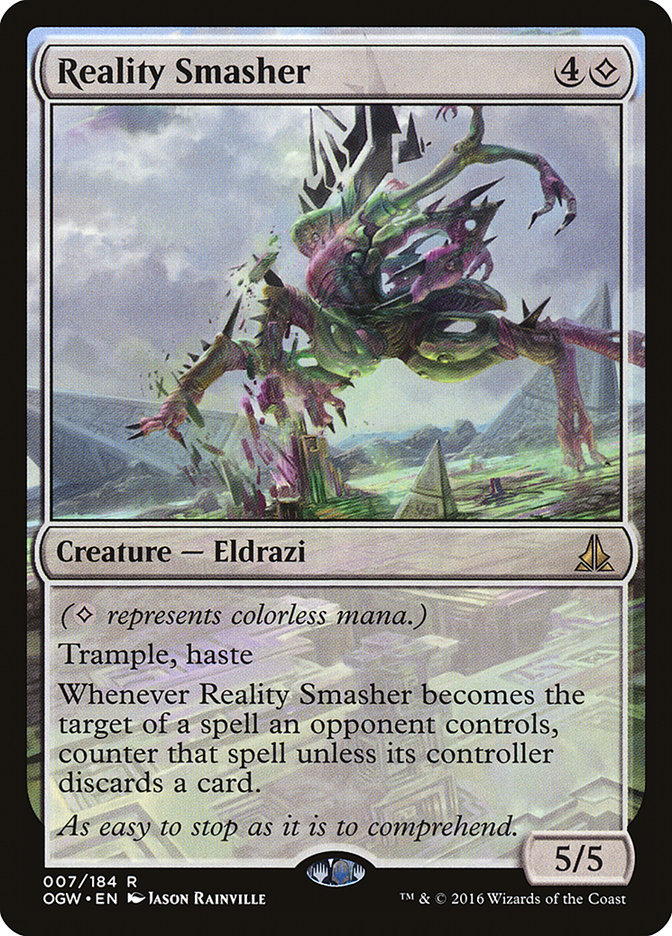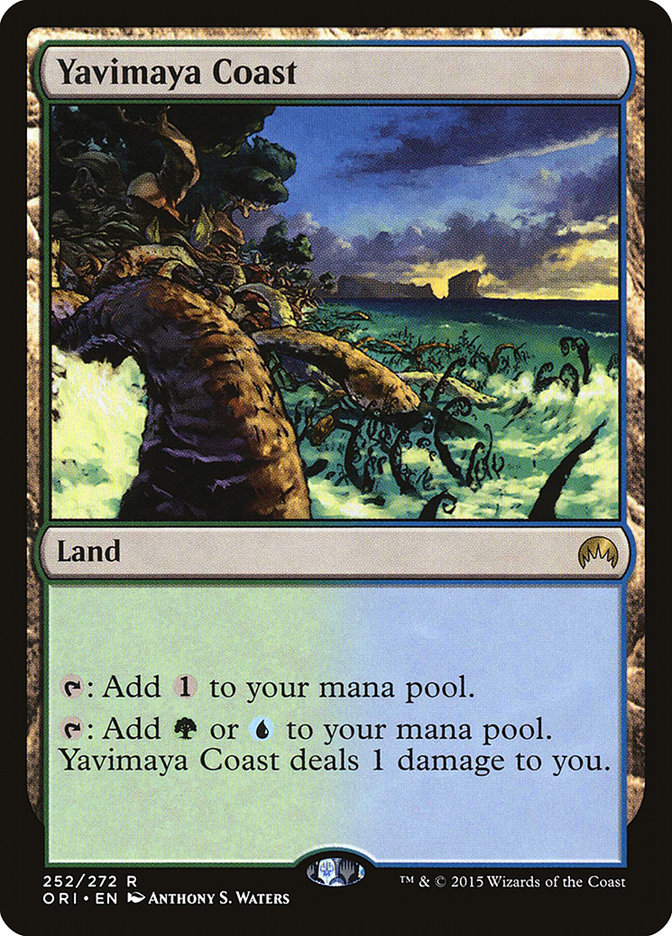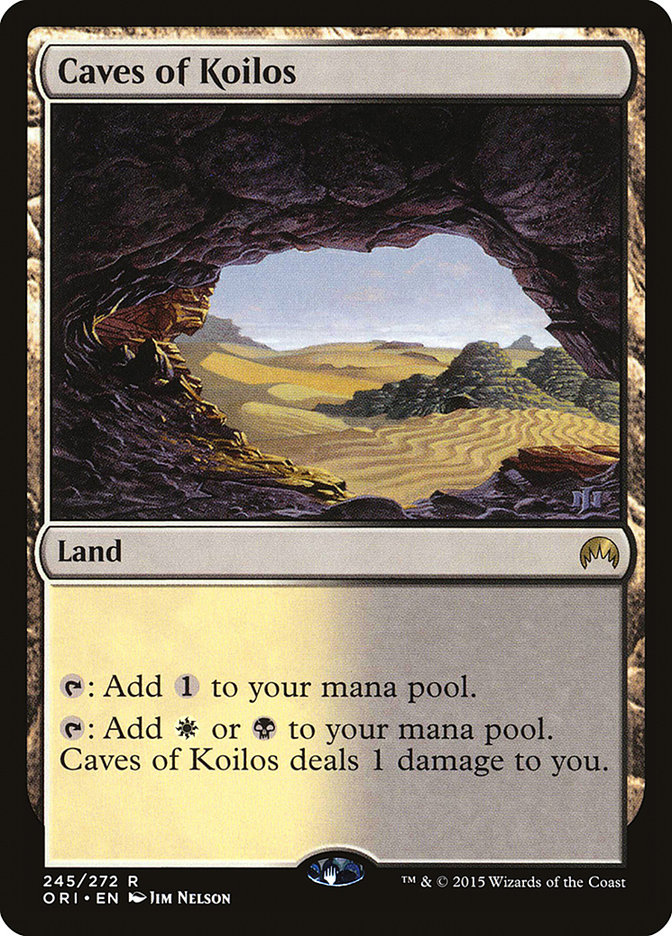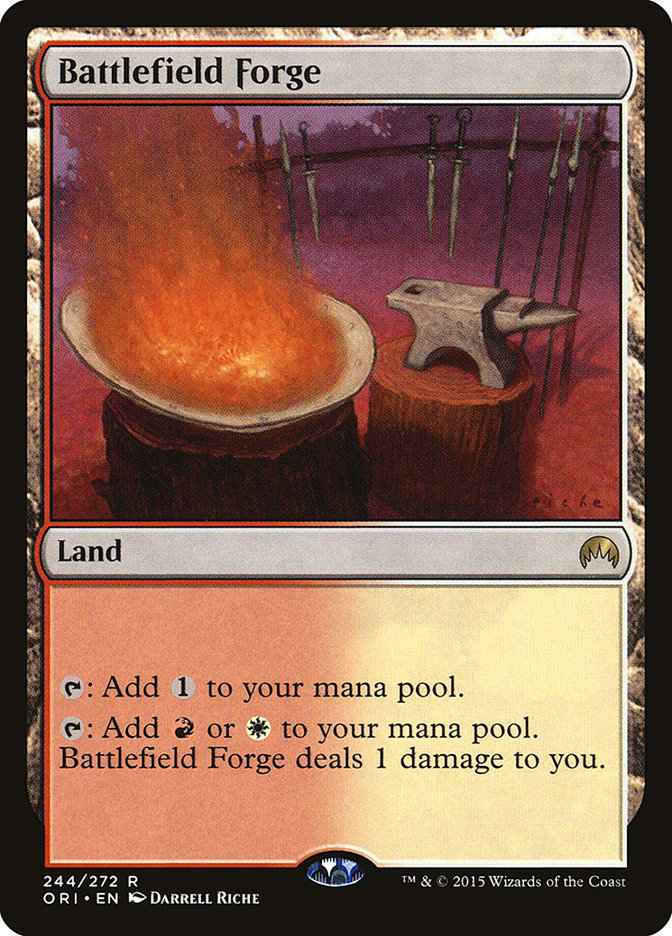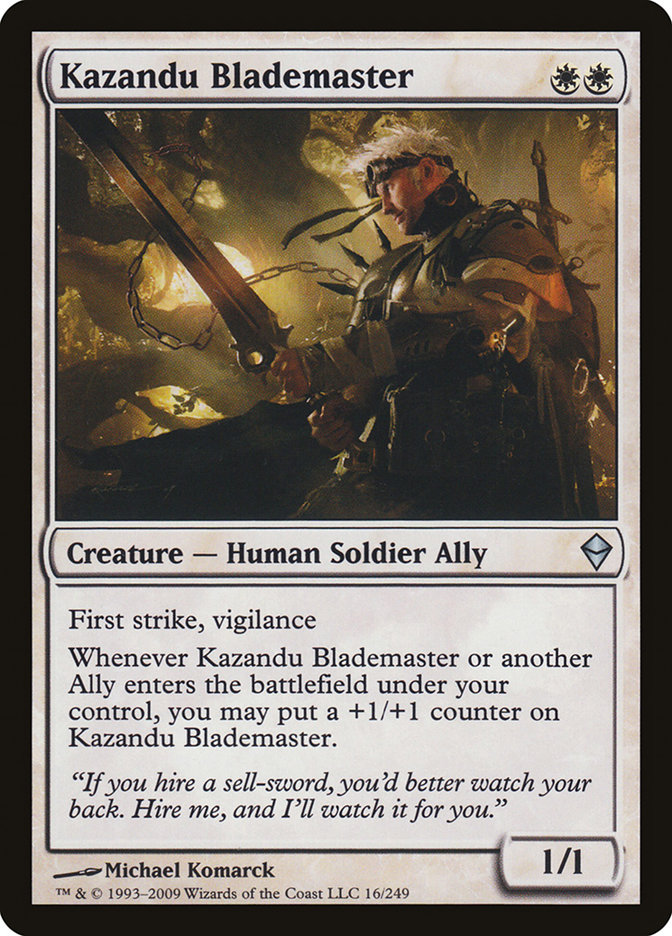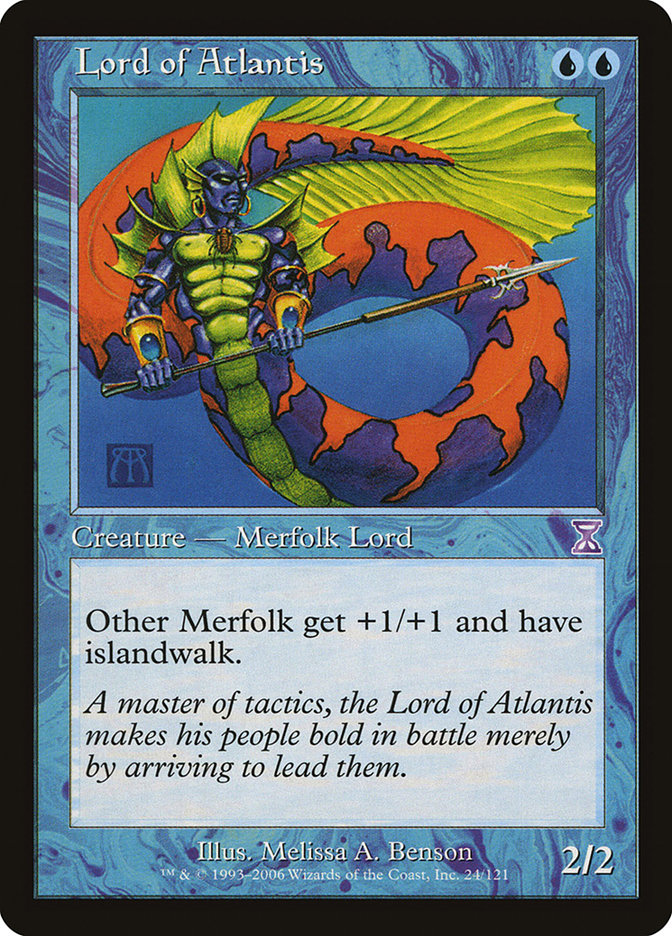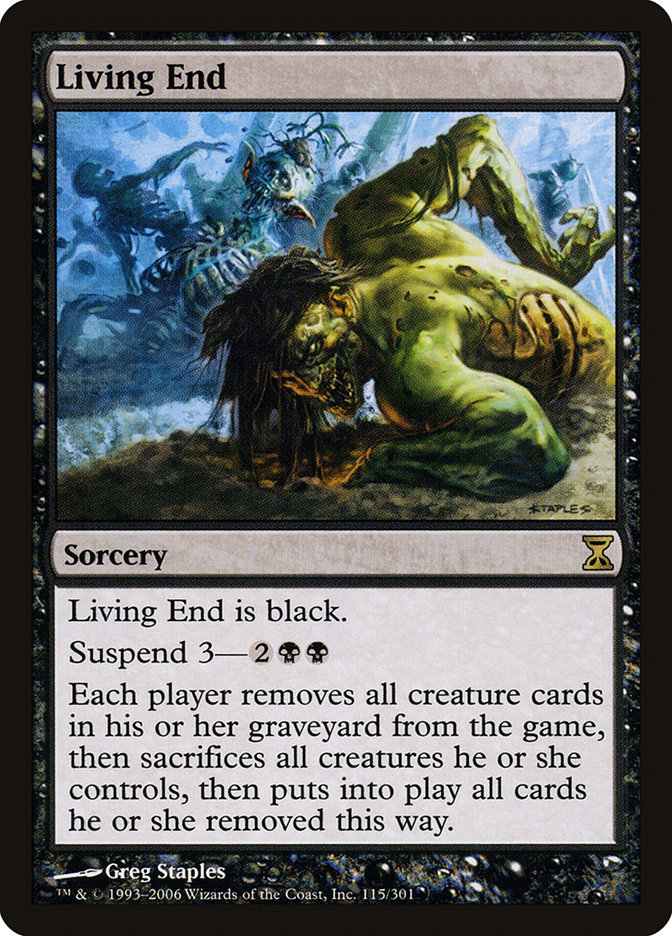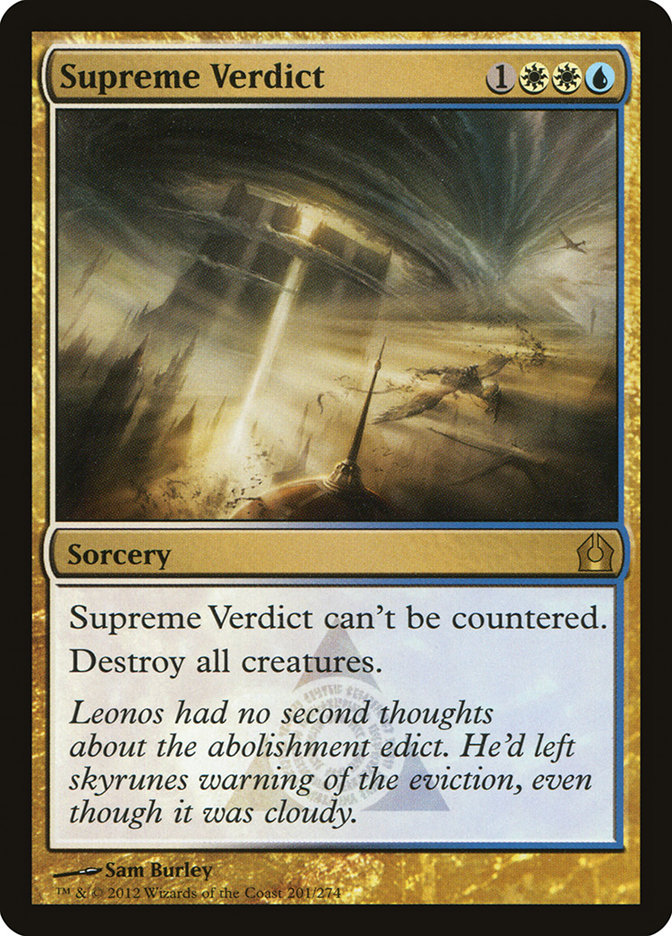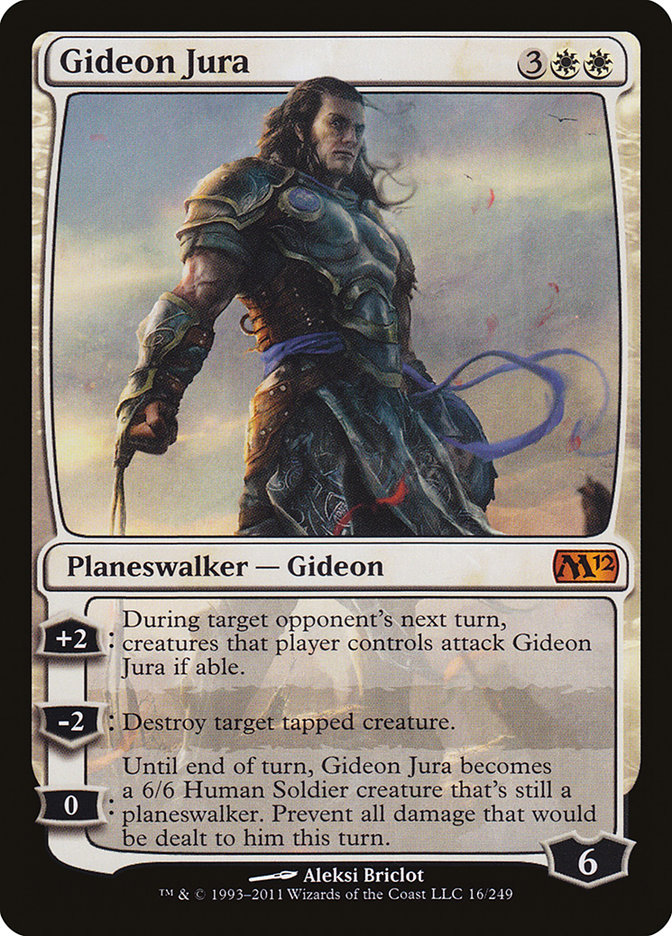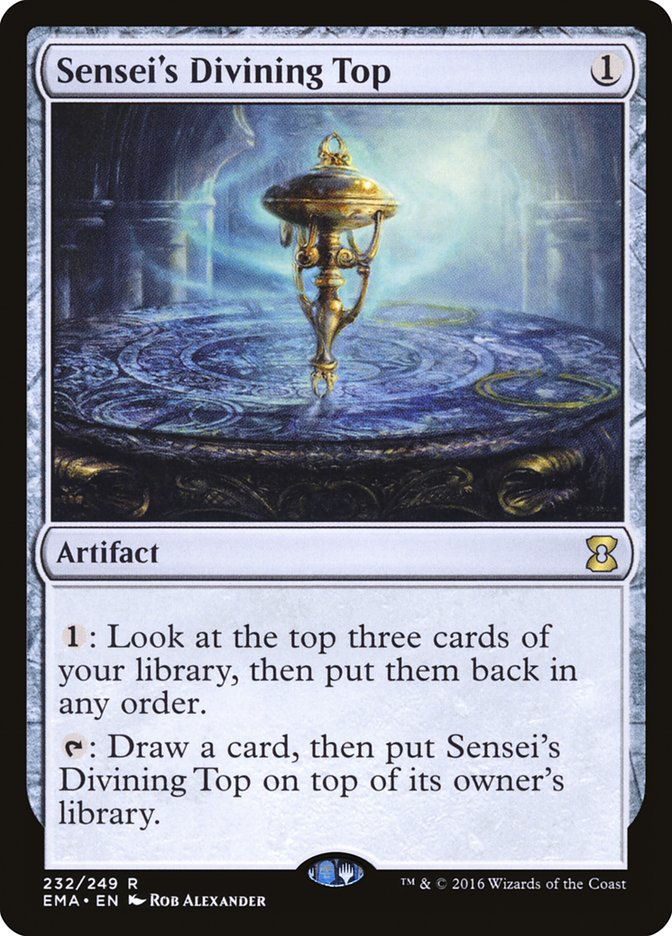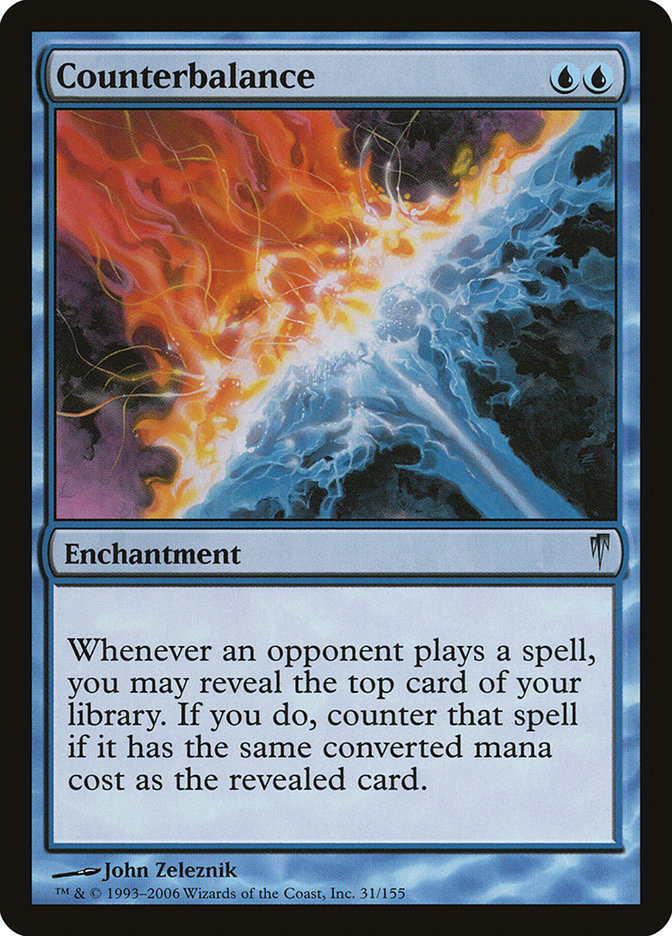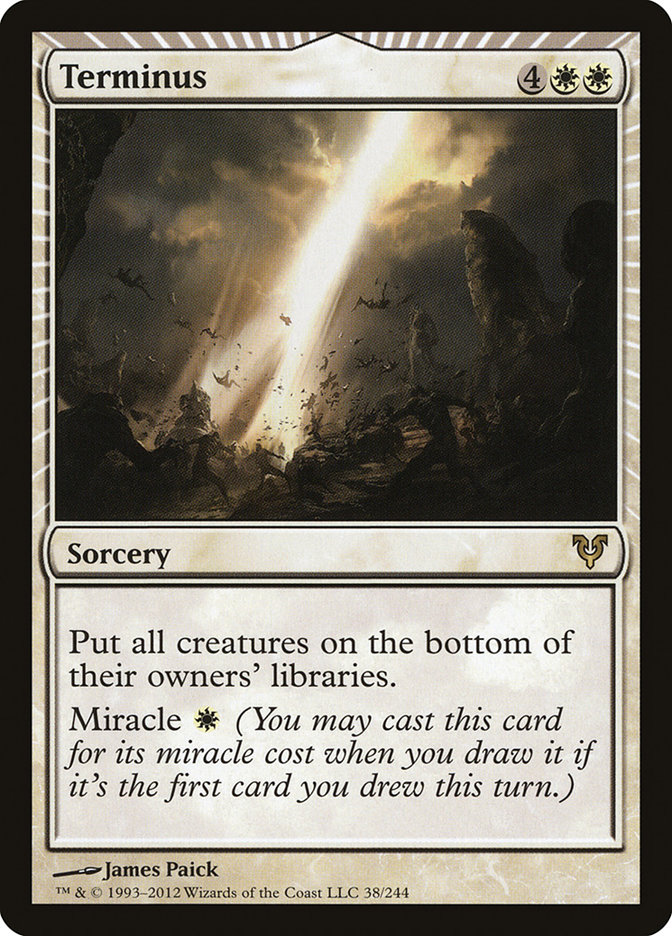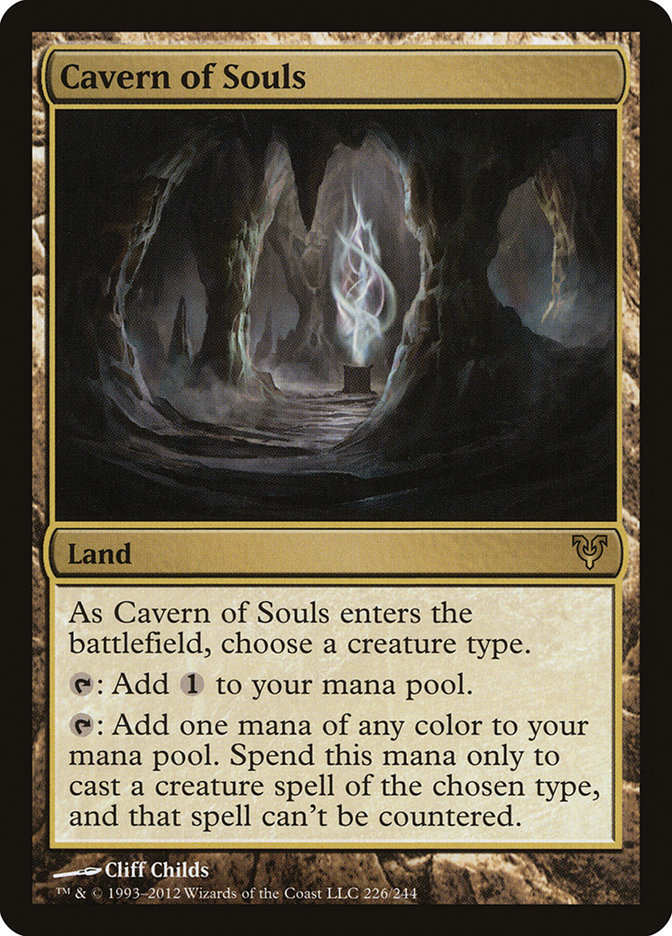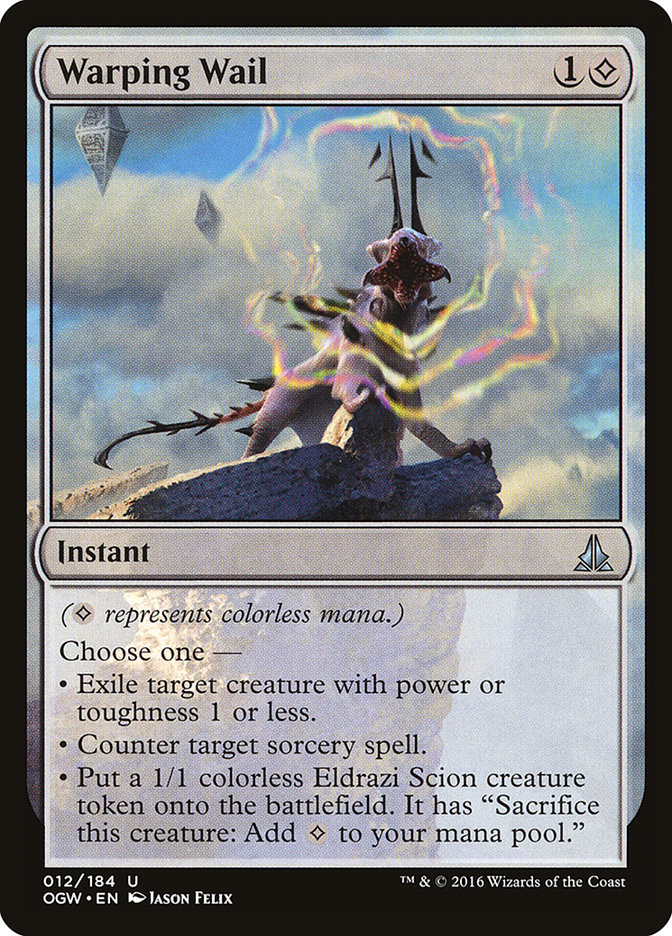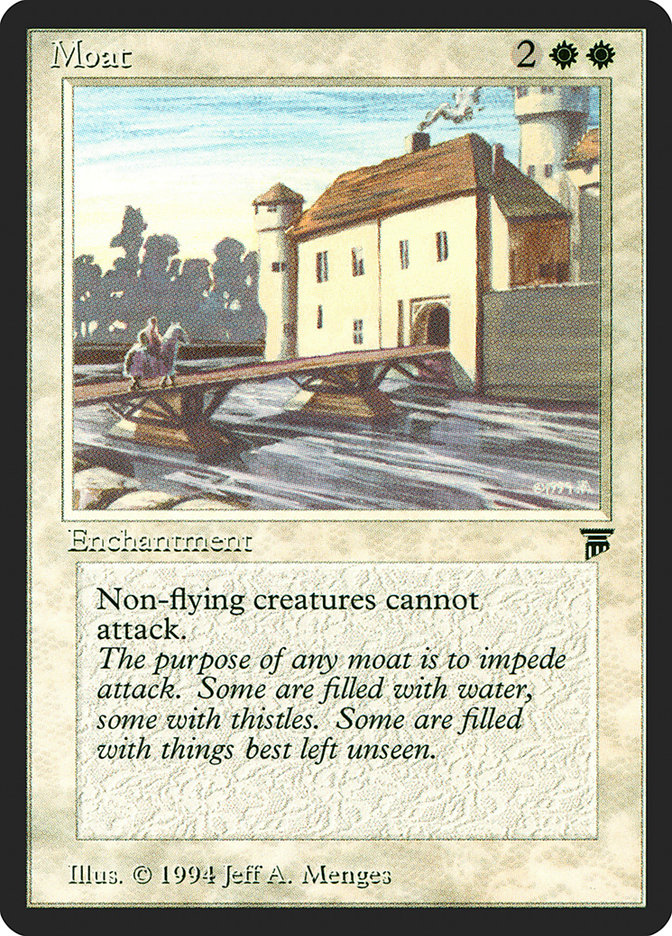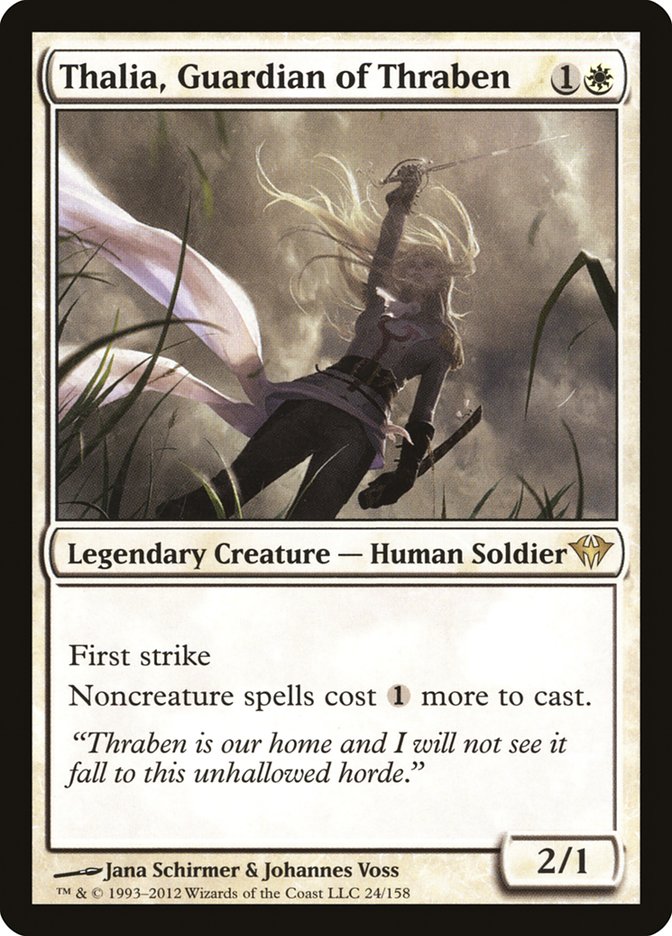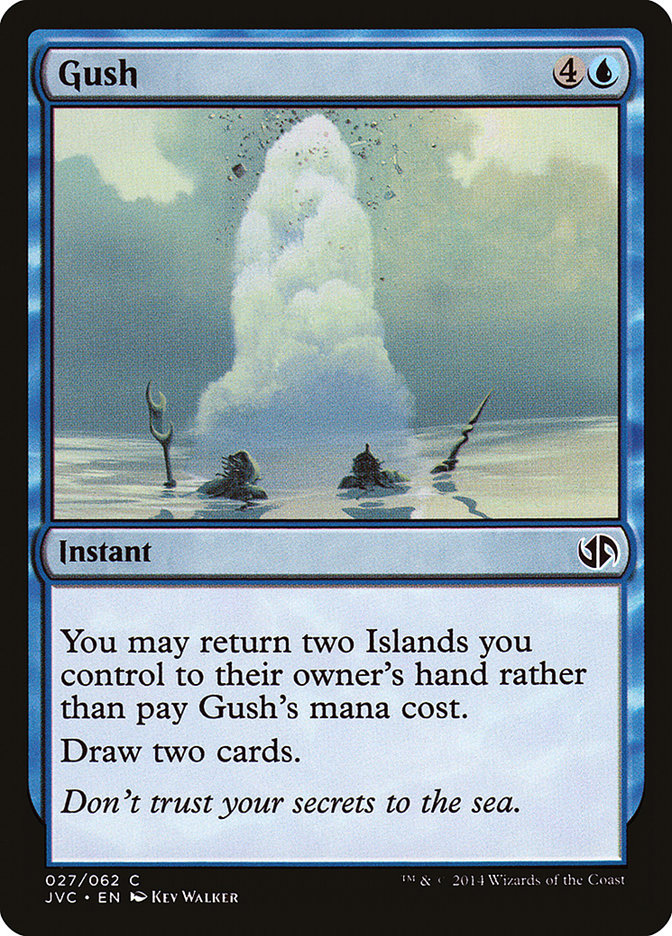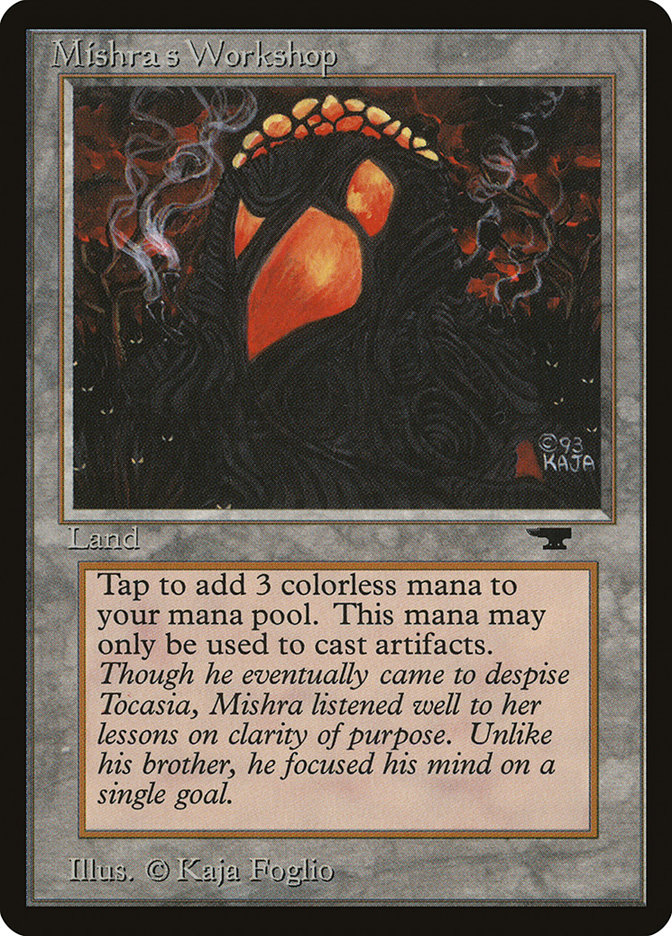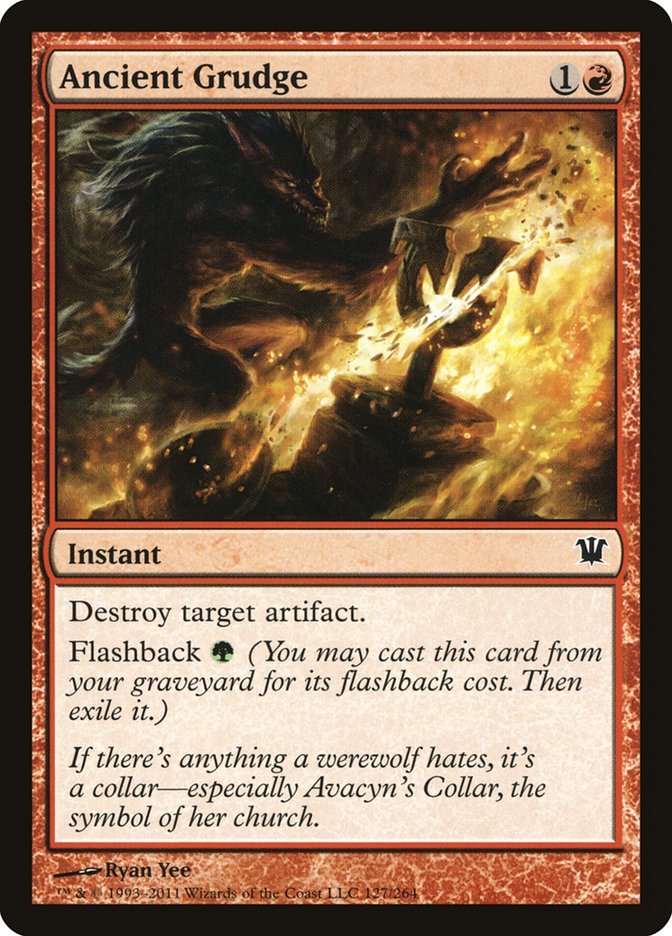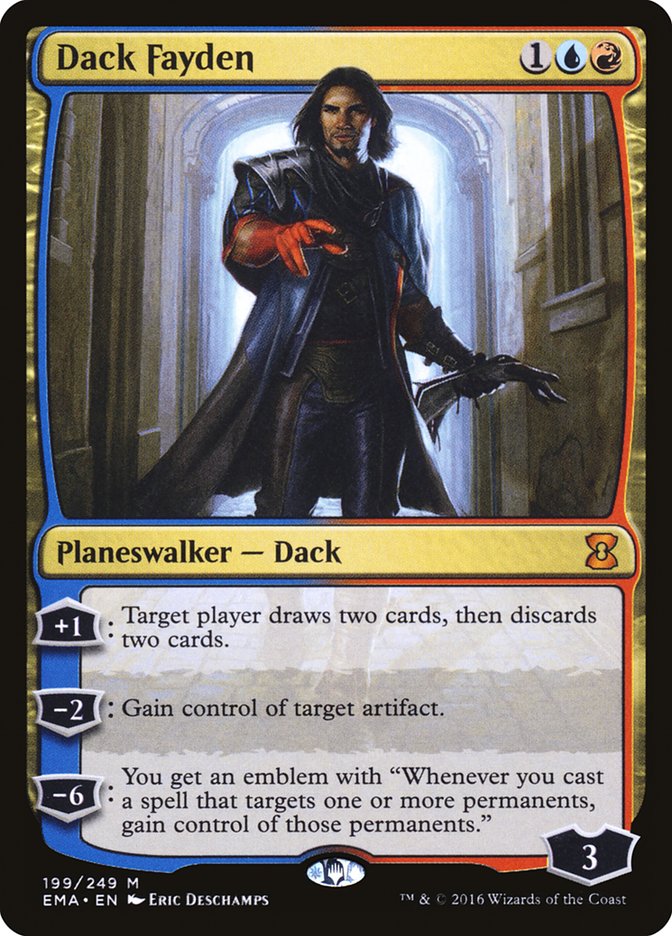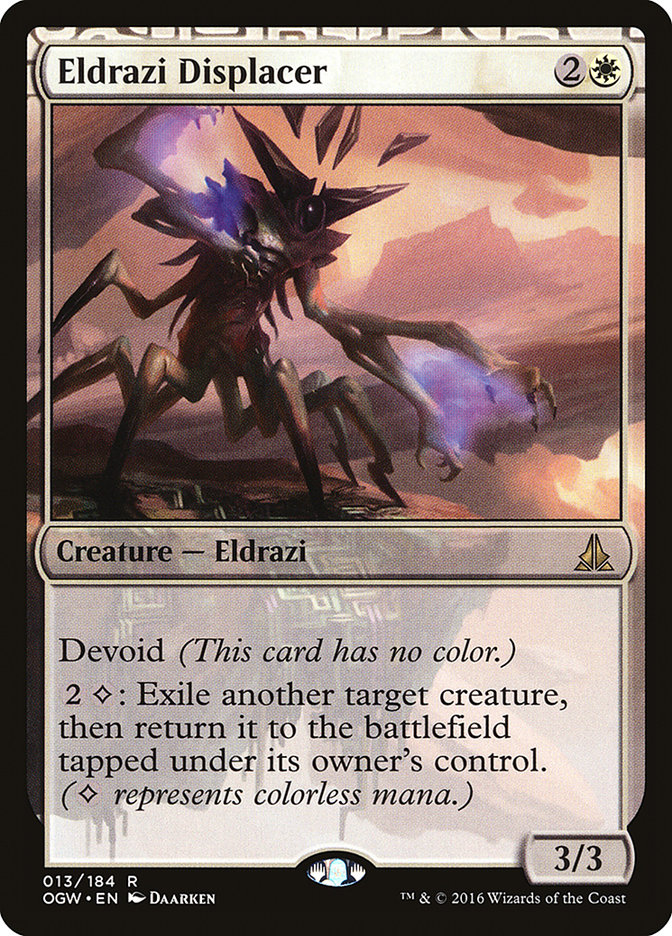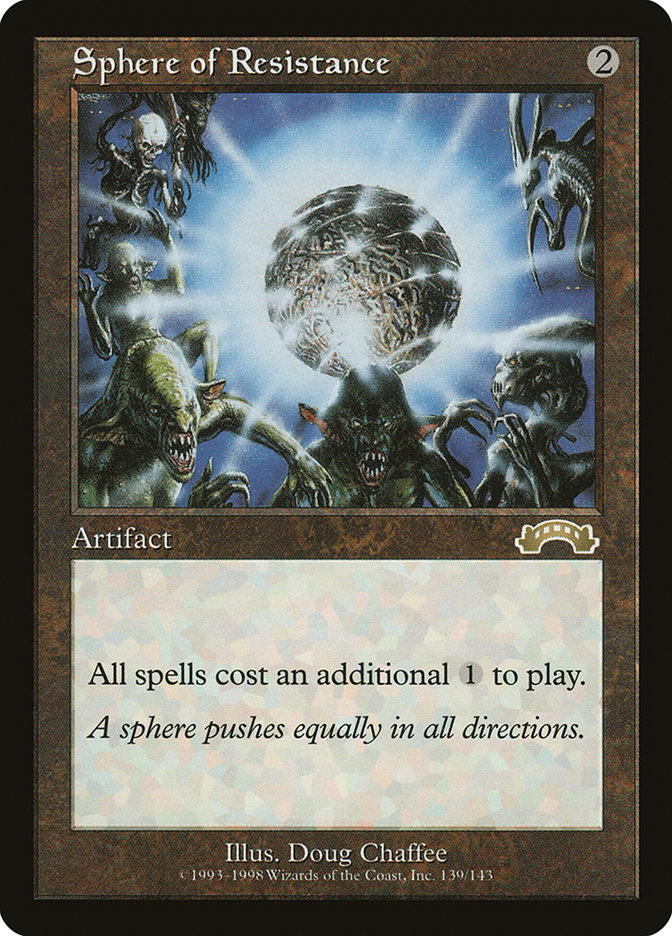Kozilek’s brood has made a bad name for itself. Yes, Thought-Knot Seer and Reality Smasher did legitimately destroy Modern for a couple of months, but in the time since then, they have legitimately improved every single Constructed format. Despite misdirected power level complaints, Standard, Modern, Legacy, and even Vintage are better formats for the inclusion of Oath of the Gatewatch.
Standard
As I briefly mentioned about a month ago, the Eldrazi are some of the last holdouts of a simpler time in Standard.
To give the overview, most of the good threats in Standard end games in brutal, insurmountable ways. Often this is tied to your opponent being completely unable to play, like with Kalitas, Traitor of Ghet; destroy all of their things, like Archangel Avacyn; or via immediate advantage that snowballs, like with Gideon, Ally of Zendikar.
In some ways the Eldrazi do this, but it’s not quite as harsh. Reality Smasher does a ton of damage quickly, but it’s still just damage. You aren’t down multiple Knight tokens or an emblem. They also are disasters to trade with, but the rules of engagement are set. You just have to kill a 4/4 or 5/5 and end up down a card, either physically via a discard trigger or in quality with a Thought-Knot Seer “cycle.” The Eldrazi are very good bodies, but they are just that with a boost. Not game-ruiners. No one sees their opponent cast Reality Smasher when they are at twenty life and immediately thinks they have no way to recover.
The other part of the equation is their flexibility in relation to the mana. Where previous colorless cards have homogenized formats, the Eldrazi actually make many more options viable. There are many decks that are possible or significantly better because they have access to an actually good threat to bridge the gap, even if it is just out of the sideboard. Because the easy lands to cast them are the enemy-only pain lands, the format is spread enough to not saturate with them. Casting them when you are playing three colors is hard unless you spend a ton of extra slots on mana like the Cryptolith Rite decks do.
I will admit this format is on the shakiest ground with the Eldrazi. If the other threats were just a little worse or the answers to planeswalkers just a little better we could easily be in a world where every deck is some mix of Eldrazi, answers, and a metagamed threat. Instead they are a real decision point in your threat base that plays an important role in keeping the format from being mono-blowouts.
Modern
Creatures (28)
- 4 Tarmogoyf
- 4 Noble Hierarch
- 4 Drowner of Hope
- 1 World Breaker
- 3 Eldrazi Displacer
- 4 Reality Smasher
- 4 Thought-Knot Seer
- 4 Matter Reshaper
Lands (24)
Spells (8)

What Eldrazi signifies is very important for Modern. It’s been nearly impossible to be a creature deck in the format since its inception. The various Zoo decks were just hyper-aggressive Burn decks trying to goldfish by turn four. The Hatebear decks were consistently bad and generally worse than the combo-toolbox versions of the same thing.
The only things that got close were the tribal decks. It took stacks of lords to produce a reasonable clock that could break through light removal, and both Allies and Merfolk at various points were close to being really good but easily collapsed under removal pressure. When you are left with a Cursecatcher and a Silvergill Adept facing down a Tarmogoyf after your lords died to Terminate, you are going to die. Eldrazi is finally the “tribal” deck that clocks fast enough to matter while being able to go toe-to-toe with midrange threats.
The banning of Eye of Ugin put a bit of a cap on how busted the Eldrazi could be. You are no longer just cold by turn 4 many games. This opens two specific holes that provide room for a more diverse Modern metagame rotation.
The first comes from the nonsense decks people thought beat Eldrazi before the ban. Living End is basically the highlight of this metagame segment. The fast linear decks of the format like Infect and Affinity are easy for Eldrazi to interact with via the broad answers like Path to Exile and the hyper-efficient ones like Gut Shot. The slower ones in the Eye of Ugin world were in theory harder for Eldrazi to fight, but in practice just died to giant bismuth monster nonsense without doing anything too often to matter. That extra turn of breathing room often makes all the difference.
These oddball decks have had past success in Modern, but it came at times when the stars literally aligned for them. While there will be a lot of the same “dodge the hate” mindset here, these decks will now be more a part of the rotating cast of characters as a deck pushes the format away from the fair decks being all Thoughtseizes and Remands.
The second comes from the pure control decks that have typically failed in Modern. Eldrazi is a stack of creatures that die to removal. If you kill them all they can’t possibly win. The Eldrazi deck is severely constrained on mana requirements, limiting the power of resilient threats it can sideboard into. Previously the additional speed often meant the control decks were a full tempo tick behind and died while answer flooded. The turn difference lets you actually line up answers on some semblance of a curve instead of competing on tempo with free Eldrazi Mimics that attack for five.
Again, this is a case where the push away from Jund-esque decks helps a ton. You can play specific trumps without worrying about Thoughtseize picking apart non-redundant functions. You still have to deal with hand disruption via Thought-Knot Seer, but it is significantly slower and significantly not Liliana of the Veil which goes a long way in making control good.
Eldrazi represents a new pillar of the Modern format that hasn’t existed before. Now that it has been scaled back to a reasonable level compared to the other mainstays, it signifies a secondary shift towards archetypes that needed the positioning boost the most.
Legacy
Prior to Oath of the Gatewatch, Legacy was in a bit of a hard lock, or more accurately a soft lock. Despite everyone’s best efforts, Miracles was absolutely dominant. I played the deck for the first time at Grand Prix Seattle last winter and demolished a bunch of people playing the Abrupt Decay strategies that “should” trump Counterbalance. I found myself losing with my specific list only to two-drop threats that ended games quickly backed by disruption, and that was mostly due to a couple of specific card choices like zero Spell Snare.
Creatures (22)
Lands (25)
Spells (13)
Sideboard

Eldrazi brought an end to that. It is especially hateful toward one-cost spells via Chalice of the Void, countermagic via Cavern of Souls, and powerful sorceries via Warping Wail. These happen to be all the ways Miracles interacts with opponents. It also attacks the other straining half of the format with heavy anti-combo elements like Thorn of Amethyst and land disruption.
Unlike Modern I’m not sure Eldrazi actually opens things up. It’s just another deck that can stand at the top tier in a format that really needed more options. Eldrazi isn’t a pushy good guy in Legacy, but it certainly isn’t fighting for evil when the other options are “counter all your spells” or Dark Ritual. Sadly, the games Eldrazi loses aren’t pretty either, usually involving them casting no spells due to land hate or their cards doing nothing due to hate spells like Blood Moon or Moat. It’s not necessarily a step in the right direction, but it is a step in a direction.
Oddly, Eldrazi doesn’t offer a lot that Death and Taxes didn’t offer before besides bigger threats, which leaves me wondering if things maybe weren’t quite as bad as everyone thought. Given the repeat success Miracles had though, it’s more likely that the sizing just helped push the disruptive creature deck through the nonsense layer of the format.
Death and Taxes often had issues against decks its pieces didn’t line up quite perfectly against, like Punishing Fire decks or Elves. Eldrazi just mashes a lot of those decks with bigger creatures, letting it always get to the point of the event where it hits a field of Miracles and not pure nonsense. Of course, Aluren finished in the Top 8 of Grand Prix Seattle, so who am I to call out what is and isn’t actual nonsense?
Vintage
More than in any other format, the Eldrazi have been a positive influence on Vintage.
After Delve card draw was clamped down on, Vintage devolved into two camps: Gush and Mishra’s Workshop. Workshop’s overperformance and generally miserable pattern of “not letting people play Magic” lead to restrictions, and it looked like in its relative absence Gush was moving in the same direction with similarly dominant numbers.
Enter Eldrazi. One of the biggest issues for Mishra’s Workshop decks has always been how to beat the hate cards if your opponent casts one. The first side of Ancient Grudge chains into the back half costing less chains into Dack Fayden being castable, and then the game ends. With solely artifacts as your colorless options the best answers were mostly more variations on “don’t let them cast them” with some Arcbound Ravager trying to bridge a gap.
Creatures (25)
- 1 Lodestone Golem
- 4 Phyrexian Revoker
- 3 Thalia, Guardian of Thraben
- 3 Containment Priest
- 2 Vryn Wingmare
- 4 Eldrazi Displacer
- 4 Reality Smasher
- 4 Thought-Knot Seer
Lands (22)
Spells (13)

Eldrazi answered this dilemma. Ancient Grudge is somewhere around okay against the deck, as it doesn’t kill the 4/4 or 5/5 that is actually doing lethal damaage. The first time I saw this interaction occur, I knew it was going to be format-changing. In exchange, Eldrazi doesn’t have to stack lock pieces as high against fair decks, and quite honestly I’m not sure Eldrazi could if it wanted to. The current lists play just enough hate to stop the actually degenerate Storm decks and slow down Gush to a reasonable pace. Eldrazi Displacer and Stoneforge Mystic are also huge trumps in the Stax pseudo-mirror, letting you beat traditional game-breakers like Wurmcoil Engine with relative ease.
Aside: I will lodge my one complaint with Eldrazi here. Eldrazi Displacer is not a fun Magic card to lose to. It creates repetitive game states where the only thing that happens is activating it and the game ceases to progress for your opponent unless it dies. Fortunately, it is just fragile enough in Standard and just ignorable enough via not playing creatures in other formats to be not 100% terrible, but that is more of a dodged bullet than anything else.
This means that fair decks actually have a place to live, or at least as fair as Vintage ever gets. Previously there was no reason to play any non-Gush blue deck as you couldn’t keep up with the Monastery Mentor–Gush decks on cards, no matter how hard you try. Now there are incentives to being more controlling. You can play a deck that is soft to Monastery Mentor as long as you have a plan to overpower them with good hands and consistently handle Stax or Eldrazi style threats.
Creatures (3)
Planeswalkers (4)
Lands (17)
Spells (36)
- 2 Sensei's Divining Top
- 1 Brainstorm
- 4 Oath of Druids
- 3 Force of Will
- 1 Sylvan Library
- 1 Sol Ring
- 1 Time Walk
- 1 Ancestral Recall
- 1 Mana Crypt
- 2 Pyrite Spellbomb
- 1 Black Lotus
- 1 Mox Emerald
- 1 Mox Jet
- 1 Mox Pearl
- 1 Mox Ruby
- 1 Mox Sapphire
- 1 Engineered Explosives
- 1 Repeal
- 1 Ancient Grudge
- 1 Ponder
- 2 Mental Misstep
- 3 Gitaxian Probe
- 2 Flusterstorm
- 2 Dig Through Time

The deck that is probably the most underappreciated in this context is the Auriok Salvagers or “Bomberman” Oath of Druids deck. It is consistently underrepresented on Magic Online as it involves an infinite combo, but also because it lines up oddly with people’s expectations of the archetype. In practice, most Oath of Druids decks are very combo-ish with the express goal of using Oath of Druids or Show and Tell to stick a huge threat and win.
Auriok Salvages plus Black Lotus, on the other hand, is a thing that naturally happens. You don’t need to overload on cards to enable it. If you just keep casting normal cantrips and interaction, eventually you will assemble Oath of Druids plus Forbidden Orchard or just the normal combo and win. As a result you play a lot like the Modern Splinter Twin decks. Some games you just have it, but an equal number of them you are fine playing normal Magic in.
The only caution I would throw out there is that real Stax still exists. Vintage ringer Montollio won NYSE last weekend with his very well-tuned Shops list that just incidentally played Thought-Knot Seer. This is a deck you still need that artifact removal against. If you are all Swords to Plowshares and no ways to break Sphere of Resistance or Tangle Wires, you will not beat that deck. Balancing hate for it, Eldrazi, and Dredge is difficult, but I think it is just doable enough to be interesting.
The Eldrazi are definitely a case where the change to the game was rocky. The first few months didn’t look good for them in the slightest, and the cards they cross-pollinated with in older formats were things like Chalice of the Void that often lead to non-games. Still, in the end it feels like they really worked out. While they are on the high end of the power spectrum, this is what Wizards should be looking for in Eternal cards: strong enough to make a splash in Standard without ruining it, but bolstered enough by older interactions to also shift formats with larger card pools.



